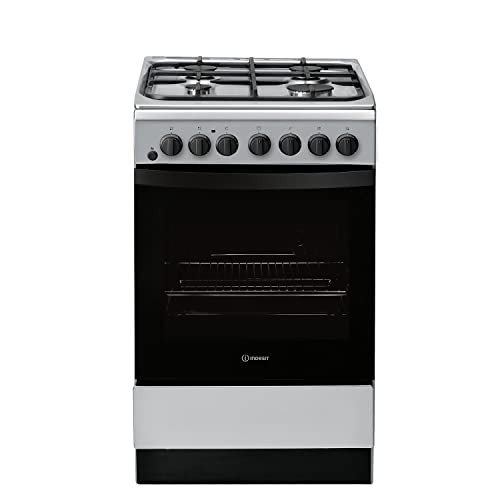The Complete Guide to Ovens and Hobs: Choosing the Right Appliances for Your Kitchen
When it comes to producing culinary masterpieces, the importance of quality kitchen appliances can not be overstated. Ovens and hobs are the heart of any kitchen, enabling home cooks and professional chefs alike to create, bake, and sauté delicious meals. Comprehending the various kinds of ovens and hobs, together with their functions and performances, is vital for making informed purchasing decisions. This short article offers a thorough appearance at ovens and hobs, assisting you navigate the choices offered so that you can enhance your kitchen's effectiveness and adaptability.
Understanding Ovens
Ovens are vital for cooking and baking and been available in various types to fulfill diverse cooking needs. Here is a summary of the most typical types of ovens:
1. Conventional Ovens
Standard ovens work by heating the air inside with gas or electric elements. They are ideal for baking cakes, roasting meats, and cooking casseroles.
2. Convection Ovens
These ovens use a fan to distribute hot air, providing an even temperature level throughout, which can significantly lower cooking times. They are perfect for baking cookies or roasting veggies.
3. Microwave Ovens
Microwaves prepare food quickly utilizing electromagnetic radiation. They are ideal for reheating leftovers or defrosting frozen foods however are not suitable for browning or crisping.
4. Wall Ovens
Including a wall oven into your kitchen design can save space and produce a streamlined visual. They function much like traditional or stoves however are built into the wall for simple gain access to.
5. Variety Ovens
These ovens combine stovetop burners with an oven, offering versatility for those who choose a single home appliance for all cooking requirements.
| Type | Cooking Method | Best For |
|---|---|---|
| Conventional | Electric/Gas | Baking, roasting |
| Convection | Air circulation | Quick cooking, even baking |
| Microwave | Electro-magnetic | Reheating, defrosting |
| Wall Ovens | Electric/Gas | Space-saving, smooth style |
| Variety Ovens | Electric/Gas | Versatile cooking |
Exploring Hobs
Hobs, also called cooktops or stovetops, provide the surface to prepare pans straight over a heat source. Like ovens, hobs come in different types, which can be classified as follows:
1. Gas Hobs
These hobs utilize a flame for cooking and offer instant heat control. They are preferred by many chefs for their responsiveness and accuracy.
2. Electric Hobs
Electric hobs utilize coils or flat surfaces to heat pans. They offer a consistent heat source, however they might take longer to cool down compared to gas hobs.
3. Induction Hobs
Induction hobs use electromagnetic energy to heat pots and pans directly, making them highly effective and faster to cook. They are also much easier to clean as the surface area stays relatively cool.
4. Solid Plate Hobs
These are older innovation that utilizes strong metal plates to supply heat. They are durable however are less effective than contemporary choices.
| Type | Heat Source | Benefits | Downsides |
|---|---|---|---|
| Gas Hobs | Flame | Immediate heat control | Needs gas connection |
| Electric Hobs | Electric coils | Constant heat | Slower to cool off |
| Induction Hobs | Electromagnetic | Fast cooking, energy-efficient | Needs suitable cookware |
| Strong Plate Hobs | Solid metal plate | Resilience | Less effective |
Choosing the Right Appliances
Choosing the perfect oven and hob for your kitchen involves thinking about various factors:
1. Area and Layout
Measure your kitchen area to figure out the size and positioning of the oven and hob. Ensure there is appropriate ventilation, specifically for gas appliances.
2. Cooking Style
Think about how typically you prepare and the type of meals you prepare. A stove might suit devoted bakers, while someone who often stir-fries may prefer an induction hob.
3. Energy Source
Decide on the energy source that best fits your lifestyle. Gas offers instant control, while electric and induction hobs supply ease of usage and are frequently more energy-efficient.
4. Spending plan
Recognize your spending plan for kitchen home appliances. Ovens and hobs vary significantly in cost, depending upon functions and brand names. Online Cooker Sales that meet your needs.
5. Functions
Try to find functionalities such as self-cleaning alternatives, wise technology compatibility, specific rack configurations for ovens, and security functions for hobs.
Frequently Asked Questions (FAQs)
Q1: What is the distinction in between a traditional oven and a convection oven?A1: Conventional ovens warm the air within without fans, while stove make use of a fan to distribute hot air for more even cooking. Q2: Can I utilize aluminum cookware on induction hobs?A2: No, induction hobs require ferrous (magnetic )materials like cast iron or stainless steel to work efficiently. Q3: Do gas hobs heat much faster than electric hobs?A3: Yes, gas hobs provide immediate heat, making them quicker for cooking compared to electric hobs. Q4: Is it safe to use a microwave oven?A4: Yes, when utilized according to the maker's guidelines, microwave are thought about safe for food preparation.
Q5: How typically must I clean my oven and hob? Buy Oven Online : For optimum efficiency, clean your oven regularly, especially after spills. Hobs should be cleaned down after each usage
to prevent accumulation. Ovens and hobs
are indispensable components of a fully equipped kitchen. Comprehending the different types, their performances, and the considerations associated with buying
them can dramatically enhance cooking experiences. Whether one is a casual home cook or an expert chef, investing time in choosing the right devices can lead to culinary success and complete satisfaction in the kitchen. By focusing on functions that line up with your cooking design, energy sources that fit your home, and budget plan factors to consider, you can develop an effective work area that inspires cooking creativity.

